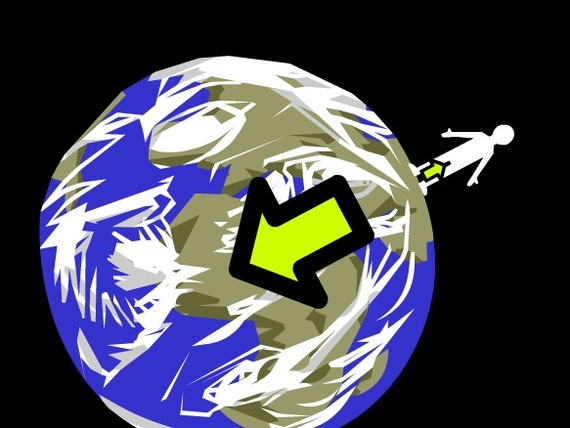I’ve always found it remarkable how common it is for people to behave as if gravity is the enemy, and yet we’re entirely evolved to interact with it as part of the way we function, no less so than with the air we breathe. Russian scientist and academic P. Anokhin phrased it thus:
“The most essential characteristics of all biological systems are defined by the Universal Law of Gravity“.
We wouldn’t get very far without it, well, we wouldn’t exist without it, but our entire ability to move about would be impossible. And your posture (I prefer poise) is a dynamic relationship between you (the psychophysical you, not just your body) and your interaction within gravity’s field.
We know how important gravity is to our health from the problems astronauts experience from spending extended periods of time up in the International Space Station (does anyone else think the Russian use of cosmonaut is so much cooler?!). Here’s a few of the issues “weightlessness” causes:
- Cardiac problems
- Abdominal pain
- Loss of bone and muscle mass
- Kidney stones
- Vision loss
- Decreased production of red blood cells
- Loss of balance and coordination (mitigated with exercise)
- Back pain
It’s ironic really that a supposed loss of gravity causes back pain when using gravity to your advantage can prevent it! I say “supposed” loss of gravity as it’s not actually true that astronauts experience “weightlessness”. The gravity on the International Space Station is only a tenth less than it is on the surface of the Earth, it’s just that the crew are in permanent free-fall as they fall/orbit around the Earth. Really no different than jumping out your upstairs window (don’t try this at home!), you don’t suddenly become weighted the moment you hit the ground! The list of ailments that astronauts suffer from is really caused from a combination of a lack of interaction with the Earth’s surface, and not being orientated in an upright manner for long periods, which affects how blood flows and pools.

 Image used with permission from diysolarpanelsv.com
You see, gravity isn’t a one way street, it’s a relationship between all bodies acting on each other, in our case, you and the Earth. Actually, it’s you and everything else around you, but gravitational effects are very weak so you don’t notice the pull of the TV and the dining room table as their mass is so small compared to that planet (Earth) we’re next to.
But that massive planet is great for us. It means we can use the huge advantage of it constantly pushing us upwards (well, outwards, but it’s relative to our experience) and we don’t need to do a thing! And when we want to move, we just release the stored elastic energy that pushing gives us, it activates all of our tissues.
I like to think that we use this relationship of gravity like a fish uses water, it supports us. And much like a fish has to accept the currents that flow through water, we have internal “currents” that we would do well to accept. As the skeleton is an inherently unstable structure our postural reflexes are always adjusting to keep you balanced, and this movement is akin to the currents of the water, you want to avoid fighting them wherever possible and instead go with the flow, perpetually adjusting with skill rather than brute force.
When feeling grounded we also feel a sense of upward thrust known as ground reaction force coming up from underneath to support us. Allow the Earth to support you and buoy you up from your feet to your head, just as a boat is on water. It’s also useful to remember how your head lightly balances on top of your spine, which you can read in more detail here.
Back in 2016 I suggested via Twitter that the British Astronaut Tim Peake try Alexander lessons to readjust to being back in contact with the earth, but unfortunately neither he, NASA nor ESA responded at the time. Let’s see if we can get them to take a look now, feel free to retweet.
@astro_timpeake Readjust to being Earth bound with the #AlexanderTechnique ! @esa @NASAhttps://t.co/ksAdtTTpxH
— Adrian Farrell (@AdrianFarrellAT) 14 August 2017
This blog was originally posted here.
— This feed and its contents are the property of The Huffington Post UK, and use is subject to our terms. It may be used for personal consumption, but may not be distributed on a website.